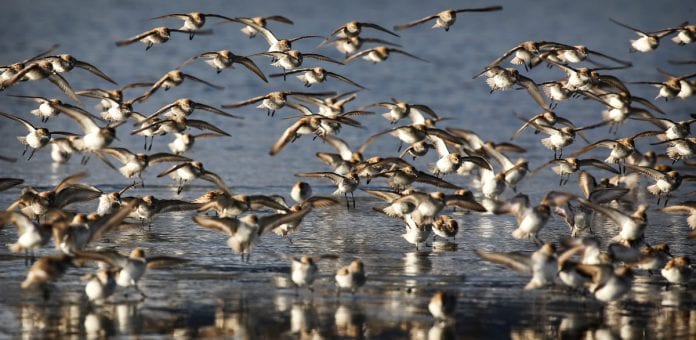
A new study by British researchers links declining shorebird populations to climate change.
An international team of scientists, including researchers from the Universities of Bath and Sheffield in the United Kingdom, say in their report released on Nov. 8 that they have found rates of daily nest predation in the Arctic to have increased threefold in the last seven decades.
Nest predation rates in the North Temperate Zone, including Europe, most of Asia and North America, have doubled, according to the report. The research was published by the University of Bath on EurekAlert, an online publication of the American Association for the Advancement of Science, and in Science magazine, the peer reviewed academic journal of AAAS.
The report cites other studies showing that over the same period the survival of adult shorebirds has decreased because of habitat deterioration or hunting.
The “double whammy” of fewer babies hatching and decline in survival of adults has had a devastating impact on populations, with species such as the Spoonbill Sandpiper becoming critically endangered, the report said. To reach their conclusions, the authors analyzed data from 38,191 nests of 111species in 149 locations across all continents. Their data suggests a marked increase in nest predation in the Arctic and north temperate zone, with smaller change in the tropics and Southern hemisphere, is linked to climate change.
Reasons for increased nest predation are still unclear, but study authors say this could be due to a shift in predators’ diets to eating more eggs rather than other food sources or a change in predator species composition.
An example cited is the crash in numbers of lemmings, small, thickset rodents who are a key part of the Arctic food web, due to altered snow cover as a result of increased ambient temperature instability over several decades. With decreased availability of lemmings, predators may be looking at bird nests as an alternative food source.
These findings are alarming, said Bath Professor Tamas Szekely.
He warned that changes in predator-prey interactions could lead to cascading effects through the food web.
“Migration of shorebirds from the Arctic to the tropics is one of the largest movements of biomass in the world, but with increased nest predation, the babies are no longer making this journey with their parents,” Szekely said. “This could be the last nail in the coffin for critically endangered species such as the Spoonbill Sandpiper.”
Previous research has suggested that climate change is likely to have an impact on animals, including species interactions such as those between predator and prey. A 2002 study by The Waterbird Society predicted that global warming would result in an acceleration in of sea level rise, inundating many low-lying coastal and intertidal areas, with implications for shorebirds who rely on these areas for feeding habitat during their migrations and in winter.
A 2017 study by Australia’s Deakin University found that climate change was causing some long-distance migratory birds to change their centuries-old ways flying between Australia and their Arctic breeding grounds.
For that study volunteers attached tiny geo-locator tracking units to 309 small shorebirds known as Ruddy Turnstones and monitored their annual migration between 2009 and 2015.
Researchers found that these birds were leaving Australia progressively earlier each year to potentially compensate for rapidly advancing seasons in the Arctic, according to study leader Meijuan Zhao, of Deakin’s School of Life and Environmental Sciences.














